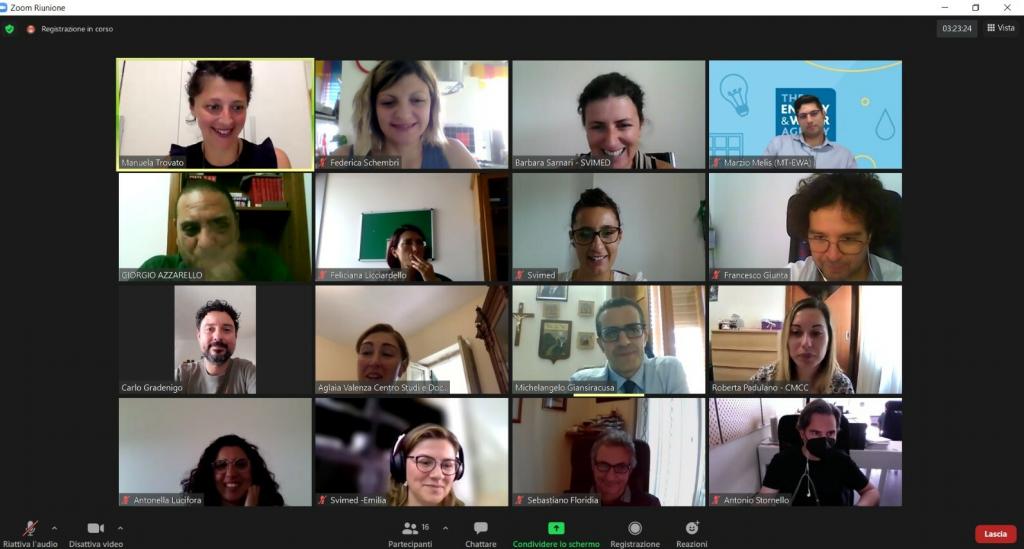NAWAMED: culture, law, tools, regulations ... possible barriers discussed in Sicily for the use of non-conventional water
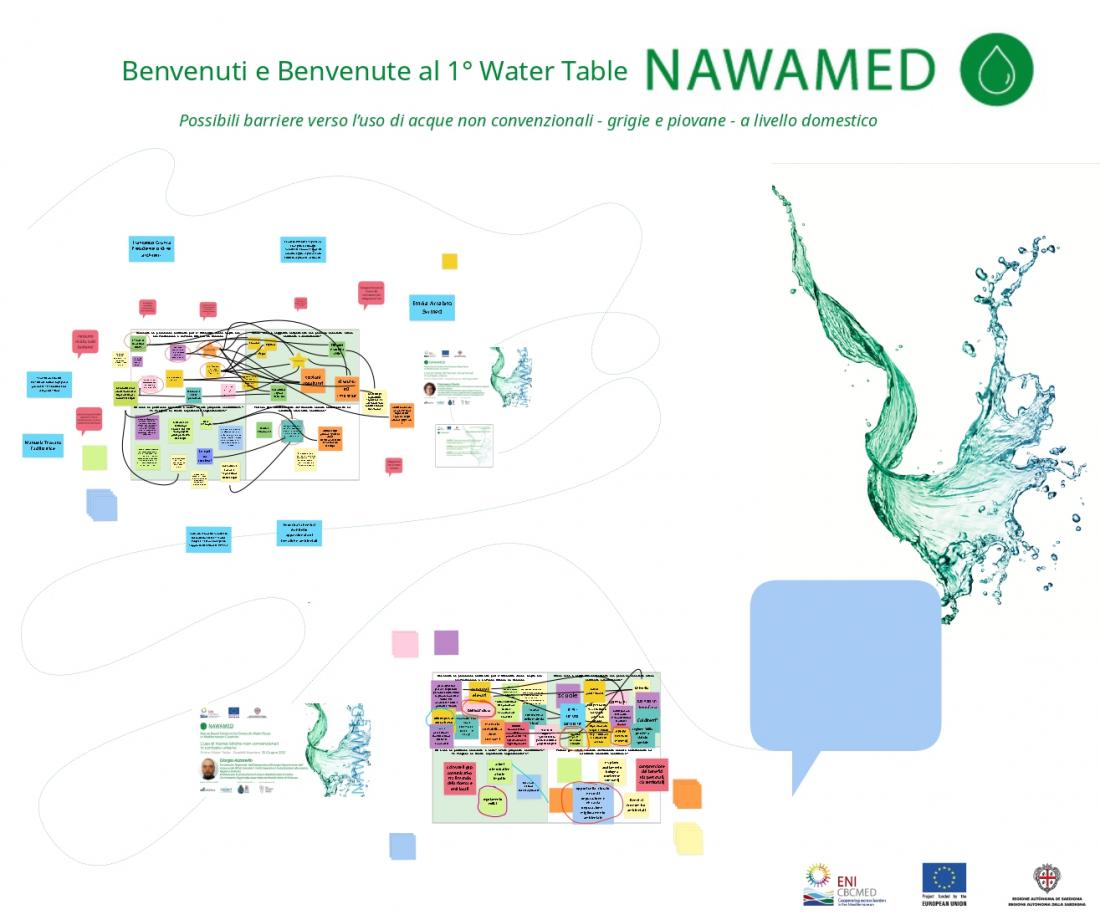
During the first regional meeting - defined “Water Table” - organized by the EuroMediterranean Center for the Sustainable Development - SVI.MED, last June 25th, 2021, stakeholders identified and debated about possible barriers to the use of non-conventional water resources (NCWR) - rainwater and treated greywater - at domestic level within the Sicilian regional context.
The meeting started with a preliminary introduction of Barbara Sarnari (SVIMED) about the NAWAMED project and a general consideration on the national approach applied to the urban water management system that is not valorising wastewater as a resource.
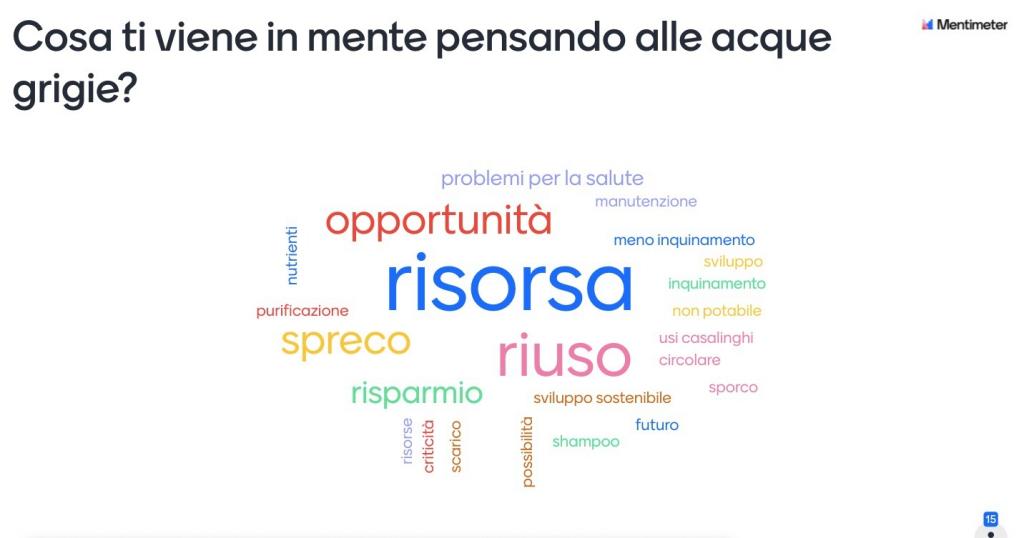
Giorgio Azzarello, regional officer - Department of energy, water and waste of Sicily Region, underlined the regulations related to the wastewater treatment and the possible barriers for the application of NCWRs’ technologies and practices in Sicily. He supplied some examples of small islands in Sicily, such as Ustica, where normally it is facing water scarcity, where the water management system developed a virtuous cycle and reuse is a daily practice.
Francesco Giunta, president of the Syracuse order of architects and representing the Syracuse network of technical professionals, focused on the poor tools and incentives for fostering well-done and long-term plans including an integrated urban regeneration approach and aiming to close the water loop.
The opportunity to contribute on assessing the Standard Building Regulations (Testo Unico dell’Edilizia), clearly identifying measure and incentives for fostering the water reuse at domestic level, is an important occasion to address now, thanks also to this multidisciplinary participatory process.
These two main topics were the starting points for the development of the working tables during which stakeholders debated and identified several barriers: legislative/regulatory, technical, social/public perception and economic/financial.
The main barriers that emerged are summarized as follows.
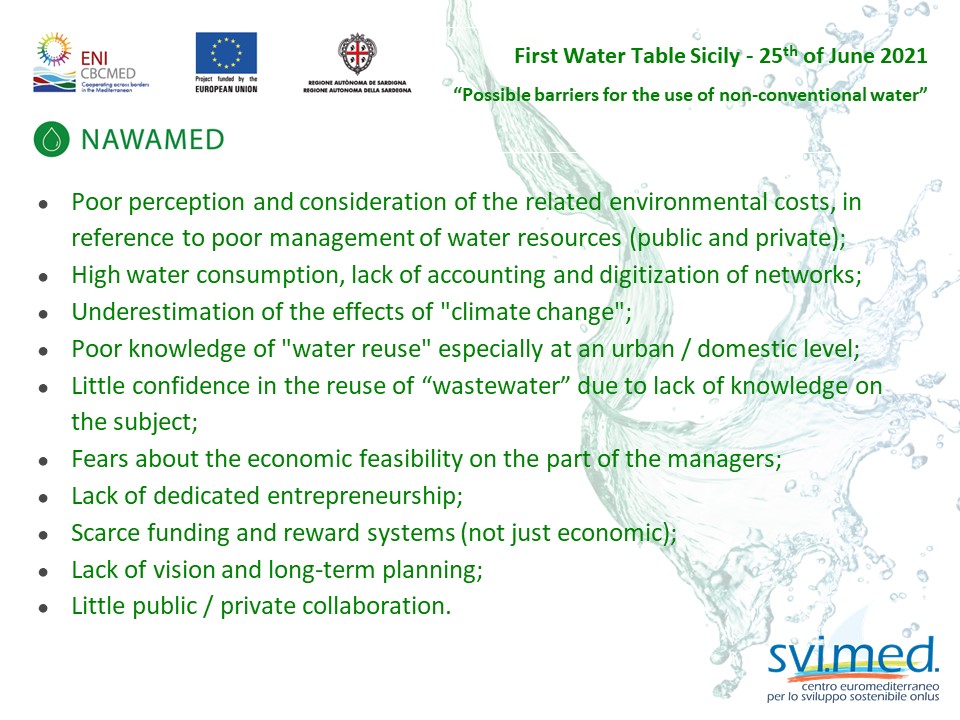
It was discussed how it is missing within the local public administration the possibility of dealing with both emergencies and at the same time medium and long-term planning. In this sense it is agreed that the contribution of technicians, workers, third parties and key players in the territory, including those outside the public administration, are crucial to stimulate communication, awareness and improve the capacity building on the reuse theme.
It is essential to affect and work on the regulatory plan to adapt the water network and encourage the separation of black and white water, a system not yet widespread in most Sicilian municipalities
The lack of accounting for consumption and unsustainable standards with respect to water scarcity, the result of insufficient awareness of the effects of climate change, are the cause and at the same time consequence of the little attention paid to existing measures for the reuse of water, as well as the lack of planning in the long term, with respect to infrastructure:
The water supply plan of Sicily Region sets pro capite water needs at 200 litres per capite per day. A very high value, compared to the average per capite water consumption (around 150) and considering that in the most advanced European “water saving” cities per capite water use is lower than 100 litres per day. Planning to “guarantee” 200 l/inhabitant/day communicates to the people that they have the right to use such a large amount of water, and give them the false hope of a wide availability of water
Apart from the absence of a well-functioning network, the initial investment for the greywater treatment and water harvesting systems makes the development of the related market (offer) uncertain accordingly with the misgivings of people (demand). This is the consequence of the poor value of water and the lack of a culture of reuse, underlining the still linear approach in water management, which does not take into account the potential of a circular economy connected to the topic.
Nobody recycles, everyone throws!
The multidisciplinary nature of the participants was an important added value in the attempt to photograph the current situation with respect to the reuse of water in an urban context. One of the directions shared across the board is the need to bring out the economic, environmental and social benefits deriving from the reuse of water in an urban context, in the short, medium and long-term on the water system as a whole, including the final treatment.
We need to start from the bottom, propose more demonstration actions with a strong communicative / educational impact that can encourage the acceptance and participation of citizens, validate their technical / economic feasibility to support the technicians of the sector in order to act on building regulations as a means to stimulate demand and therefore increase the potential of supply
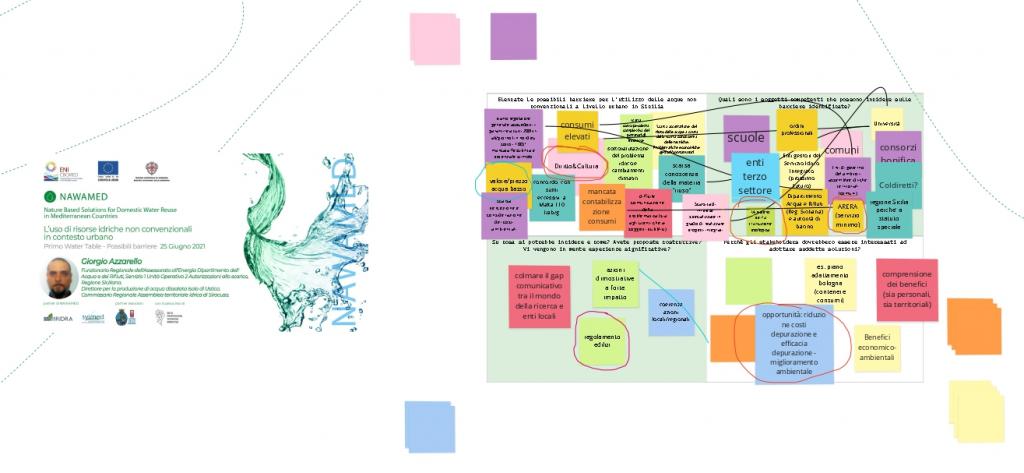
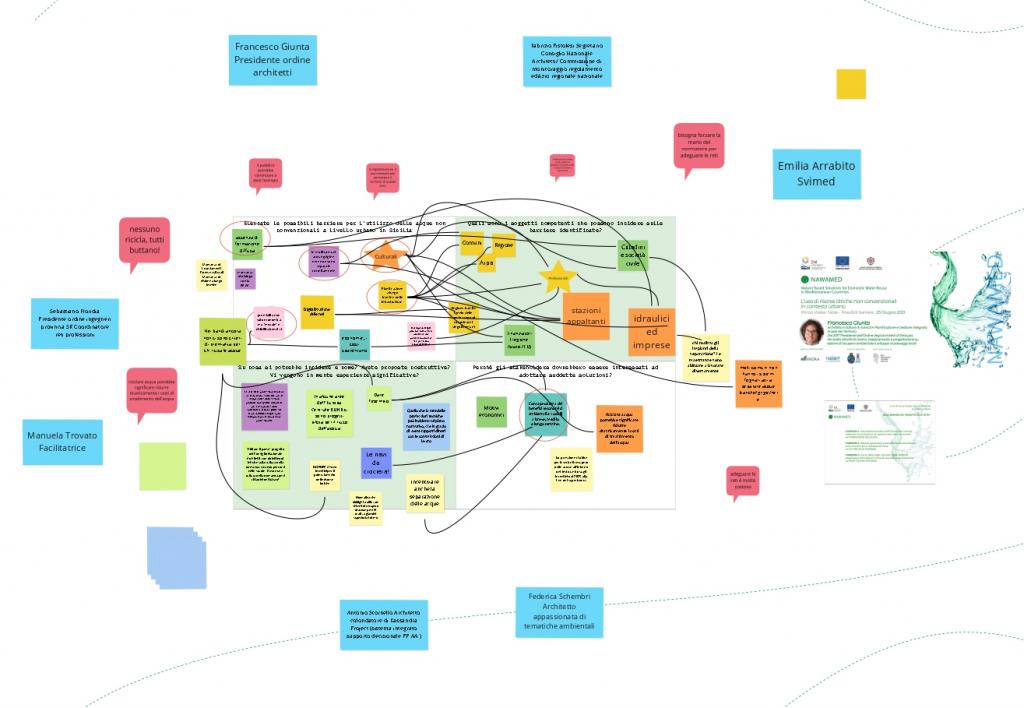
In conclusion, Michelangelo Giansiracusa, mayor of Ferla (SR) associated partner of NAWAMED, reminded that local public administrations have the role of raising awareness within regional institutions and outside of the challenges that climate change offers us. In this sense, the implementation of the living green wall in Ferla, thanks to NAWAMED project, is a first step to translate the theory into practice.
Every action, even if small, triggers a change!
At the end of the meeting, recommendations and conclusions were reported and will stimulate the second of the three debates foreseen in autumn to close the cycle of “water tables”, in order to imagine, on the basis of those barriers, possible measures/solutions and a final strategy to foster the use of NCWR at domestic level.
